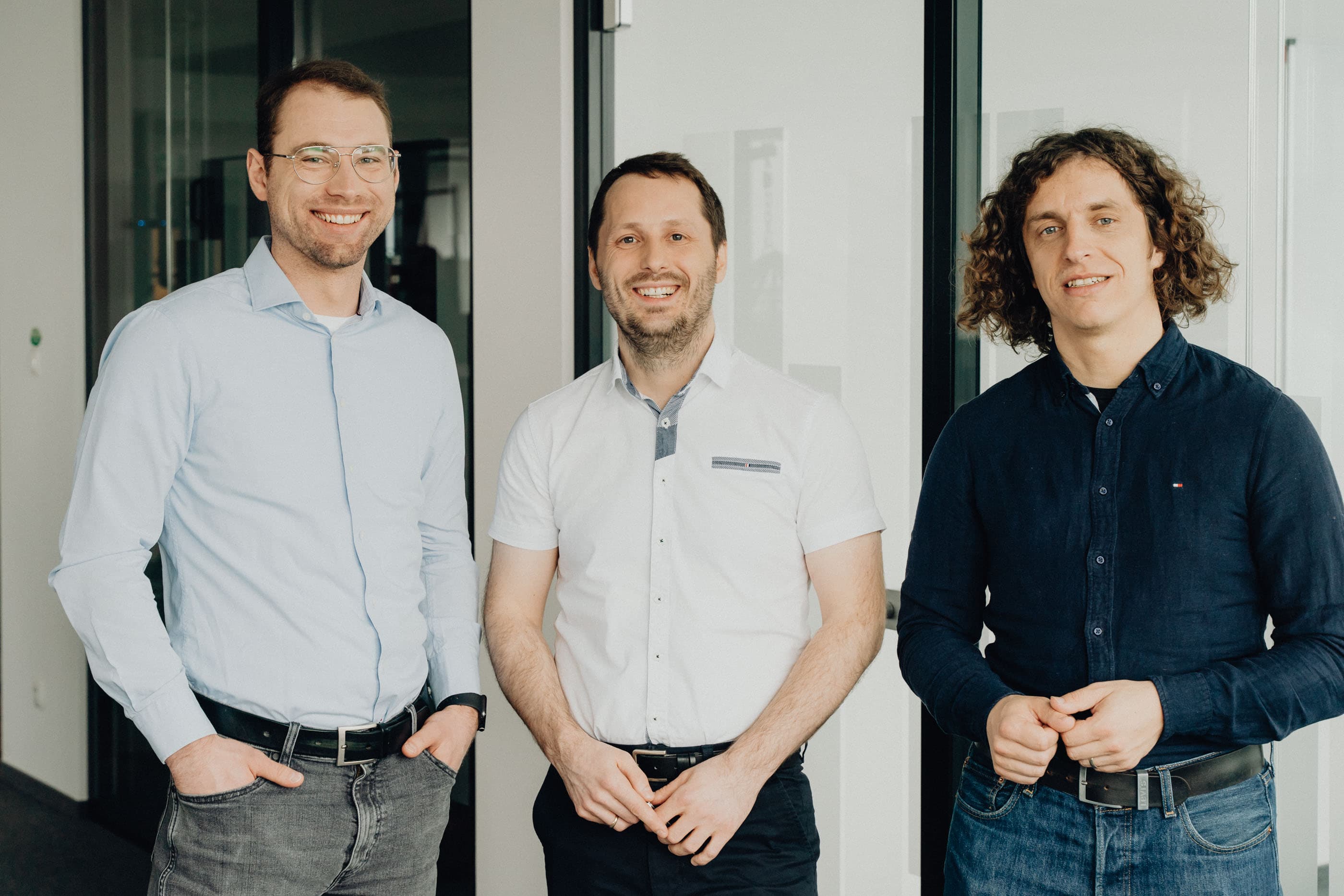Green Tech Software Solutions: For those wanting to eradicate climate change

Mateusz Szymański
Jan 28, 2022・6 min read
If you’ve been considering initiating your own startup in the green tech sector or investing in any such ideas, here is a short guide to the most pressing climate issues today, along with some examples of the existing solutions this sector is providing to deal with climate change. The following text is based on the latest, highly recommended Bill Gates book How to Avoid a Climate Disaster.
On the whole, the world emits 51 billion tonnes of greenhouse gases every year. This is a scientific fact. How much should we emit to stop global warming? Zero.
To merely limit emissions means temperatures will still continue to rise. It is therefore imperative we succeed in achieving this zero-emission objective, an objective that poses this century’s greatest and most urgent challenge. For this, an array of innovations, supported by individual effort, climate activism and sensible government policy is not only necessary, but crucial.
Behind the 51 Billion

27% of those tonnes stems from electricity production. 860 million people in the world still don’t have constant, stable access to electricity as in developed countries like the US or those of the EU. And as 75% of this resource is still produced by way of fossil fuels, it remains a significant contributor to the climate issues we face today. Although it is arguably the role of governments to ensure the transformation of this 75% into a renewable resource (i.e. solar, wind, nuclear), there are still many practices in the technology sector that entrepreneurs can improve:
Battery usage - according to Gates, it will be very difficult to improve the modern-day battery. There are, however, companies like IQHi that create analytical tools for collecting battery usage data so that businesses can improve battery life cycles and predict remaining use times.
Energy-saving - there are many software solutions that can be applied here for both individuals and companies. Carbon accounting platforms such as Persefoni, or Ducky, for example, which are designed to influence peoples’ daily habits which in turn affect their levels of CO2 emission.
Innovations in energy storage - molten salt, for example, which is effective and efficient for storing thermal energy.
Carbon capture and storage (CCS) solutions for capturing CO2 in power plants that use fossil fuels.
31% from manufacturing. Here is substantial use of electricity supplemented by the carbon emissions generated through the various chemical processes typically involved (e.g steel production). Boiling it down, manufacturing involves three substances mainly: cement, steel, and plastic. The first two are used to build infrastructure. Any developing country will use endless tonnes of cement for growth - e.g. in the first decade and a half of the 21st century, China used more cement than the US had throughout the entire 20th century. As for plastic, we’re all aware of its ubiquity as it is used seemingly in all products one way or another - electronic devices, clothes, cars, packaging... What can technology do to lower emissions in this area?
Help with resources management - software that helps companies use fewer resources and recycle better - e.g. employing resource management platforms like Rheaply or one to encourage people to recycle more, such as Bower.
Create new ways for clean energy production which can be applied to manufacturing.
Find solutions that will enable more widespread use of electricity from renewable resources instead of from fossil fuels in the industry.
19% is agriculture. Animal husbandry produces large volumes of emissions every year, and not only of CO2 but also of other harmful gases like methane. As the earth’s population grows, so grows the demand for food, ensuring an annual increase in such emissions. What can be done to curtail this increase?
Reduce food wastage - this requires a consumer’s individual effort, particularly in developed countries. But it’s not just about consumers. Supermarkets and stores are notorious for food wastage. Fortunately, there are software solutions such as Phood which enable such businesses to track and manage the levels and rates of these wastages.
Create and promote sustainable food - for the most part, this is a role for biotechnological companies such as those working on meat alternatives or new fertilizers. There’s also a significant role to be played by software developers to create solutions to promote this imperative to more sustainable food. One example is Prodikt, an application that enables consumers to compare the environmental impact of a product’s production process. With such readily available analyses, consumers can make more educated decisions on their purchases.
16% via traveling and transportation. It’s all about fuel - more specifically petrol - the second biggest source of emissions in the US. Worldwide, cars are responsible for about 50% of emissions, followed by aeroplanes (10%), shipping vessels (10%), buses and general trucking (30%). What solutions should we consider for lowering this 16%?
Switching to alternative fuels. Biopetrols, for example, are made from plants or electrofuels, and are also made by using carbon-free electricity (e.g. hydrocarbon fuel). These can be “drop-in fuels”, fuels used in place of petrol without affecting an engine’s performance.
Increased use of electric vehicles. (Although increasingly popular among drivers, owing to fewer technical issues, overall comfort, and declining cost, the same cannot be said when looking for profitability in the shipping and aero industries.)
Use less transport. Cycling and walking not only help offset emissions given off by standard modes of transport, they are, of course, healthier practices for the individual. Here, city planners can be hugely influential. Using platforms such as UrbanSDK, for example, they can formulate more sustainable public transport solutions for city infrastructures.
7% from cooling and heating. Currently, we use more energy for heating; at the same time, rising temperatures generate a rising demand for air conditioning. What can we do to make heating and cooling more eco-friendly?
As always, more efficient energy usage. Much energy wastage originates in inappropriately designed buildings constructed using inappropriate materials. It is therefore imperative we develop technologies that will contribute to a more sustainable construction industry. One great example of this is Konsus, a viable software solution for energy optimization, cost saving and a generally more ecological approach to building.
In his book, Gates outlines five major sources of harmful emissions and proposes various responses for lowering these emissions. For each source cited, I have prescribed a corresponding software solution which may be used to contribute to the reduction of that source’s emissions. They’re not the only ones, of course, so I’ve prepared the following chart of alternatives so that you may more clearly recognize the growing trends within the green tech startup sphere:
The division of software solutions in Greentech
| Who Is the platform user? | Consumer | Company |
| Solution | A platform that influences habits and behavior to support sustainable decision-making. | Data analyzing platform and efficiency optimization platform. |
| What is the user/company’s motivation? | to be more eco-friendly to raise own awareness e.g. about carbon footprinting to save money to make better future decisions | to be more effective to be more sustainable to attract investors to save money to make better future decisions
|
| Examples | Product comparison platforms, platforms promoting recycling or other eco-friendly activities and impacting behaviors. | Energy optimization platforms, resource management platforms, city-planning platforms, carbon-offsetting platforms. |
There will of course also be other green tech software programs out there which do not match the above criterion; at the same time, the chart provides a clear overview of which environmental issues are trending most prominently and how startups are actively - and creatively - corresponding to them. These innovations are vital to the ongoing search for climate change solutions and are ones to promise much for the future of both technology and our planet.
Digital Transformation Strategy for Siemens Finance
Cloud-based platform for Siemens Financial Services in Poland


You may also like...

Embracing Green Tech: How Digital Transformation Can Drive Sustainability
Green tech and digital transformation go hand in hand, helping businesses cut impact, boost efficiency, and drive innovation.
Alexander Stasiak
Mar 24, 2025・15 min read

How to Choose the Best MVP Development Company for Your Project
Choosing the right MVP development company can make or break your product — here’s how to find the perfect partner for a successful launch.
Alexander Stasiak
May 26, 2025・7 min read

Understanding the Difference: Value Proposition vs Unique Selling Proposition
A value proposition highlights the overall benefits a business offers, while a unique selling proposition (USP) focuses on the one distinct feature that sets it apart. This guide explains their differences, provides examples, and offers steps to craft each effectively for impactful marketing.
Alexander Stasiak
Dec 11, 2024・9 min read
Let’s build your next digital product — faster, safer, smarter.
Book a free consultationWork with a team trusted by top-tier companies.








